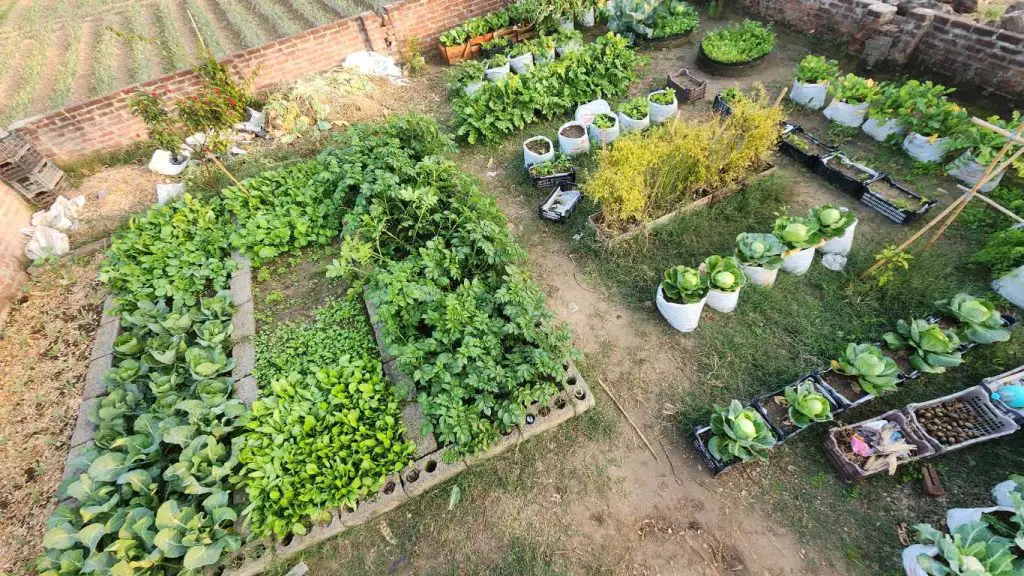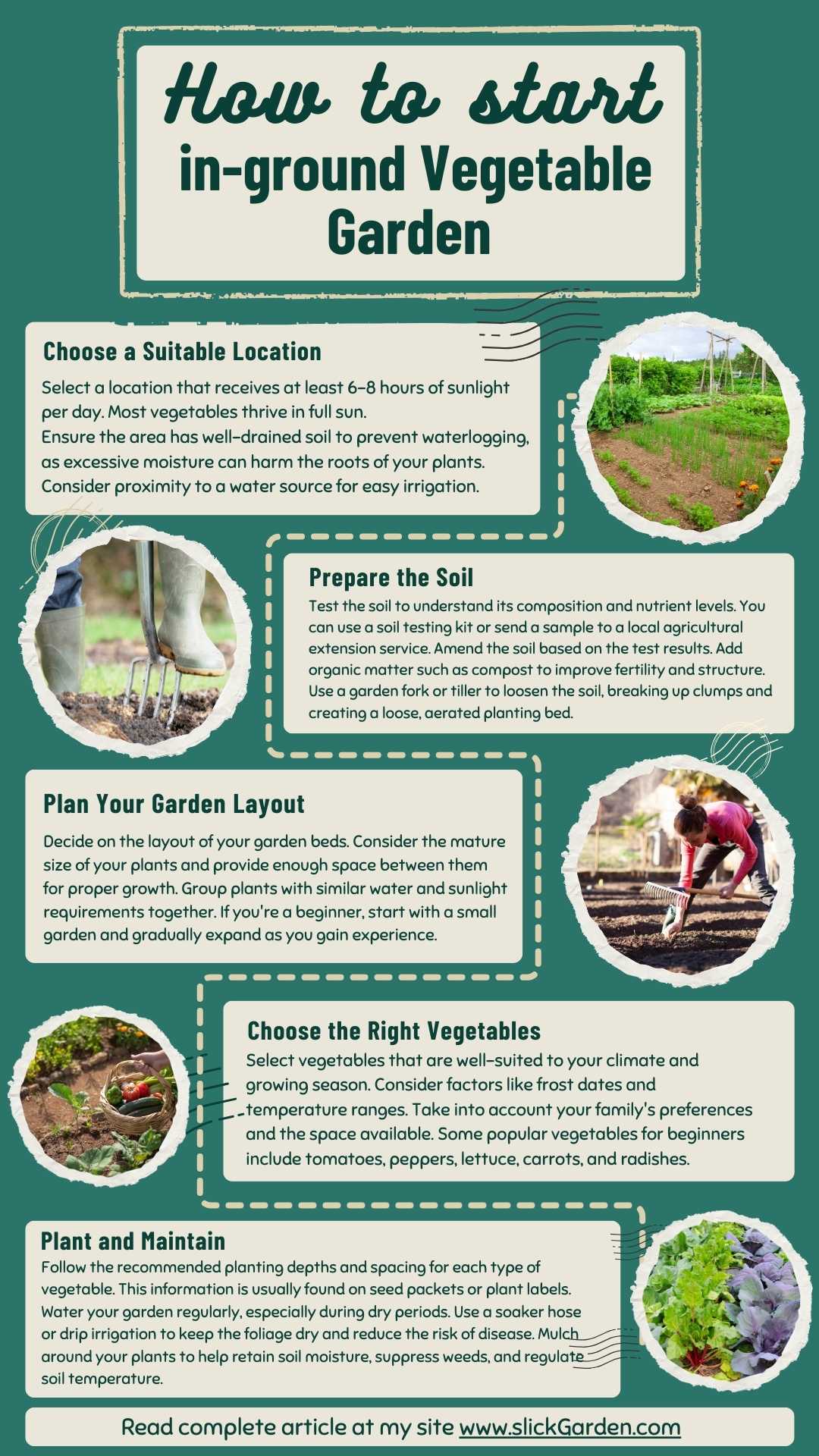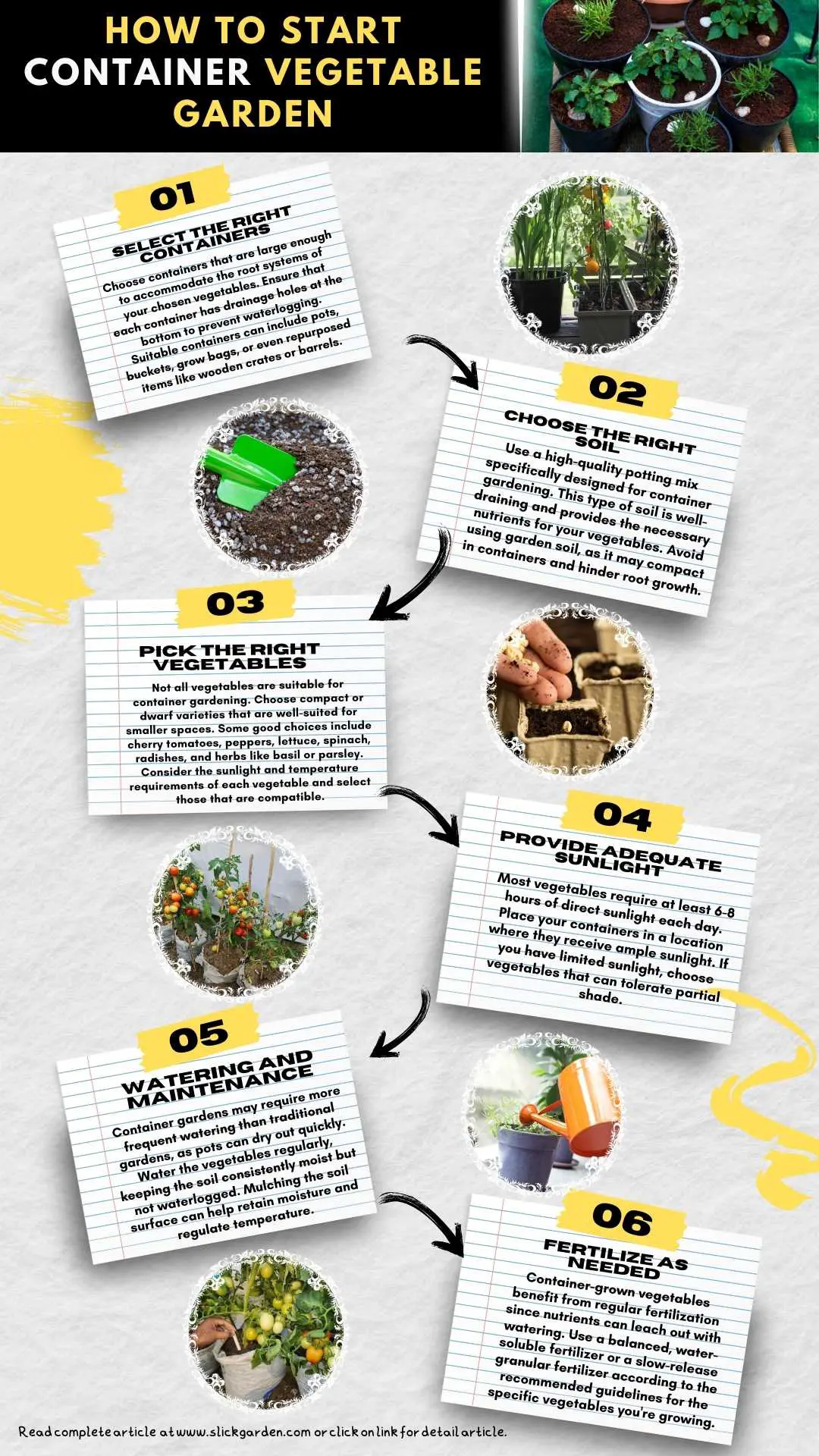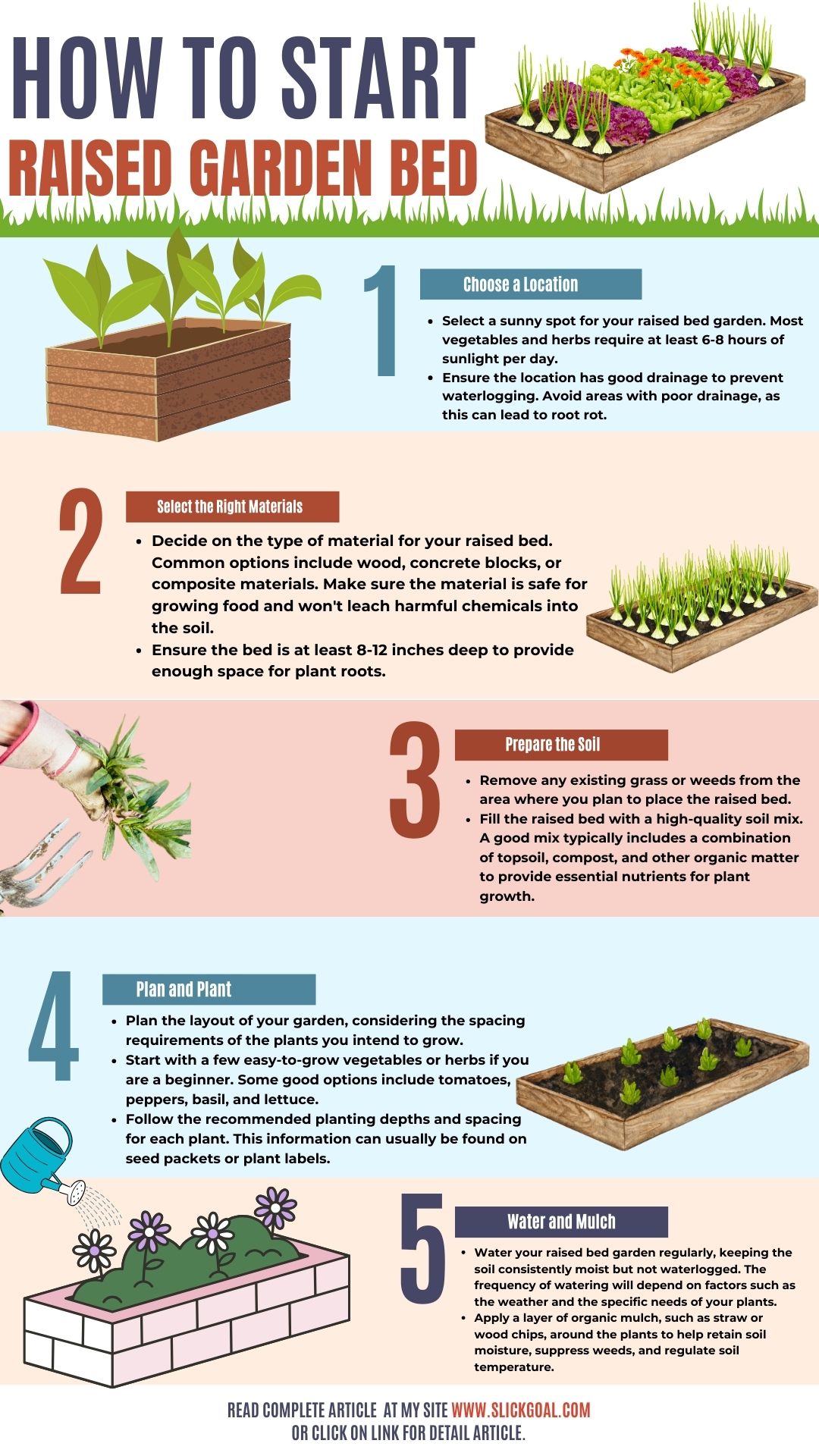When it comes to growing your own food, there is a wide variety of gardens to choose from. Various types of gardens, such as tropical plants, herb gardens, and flower gardens, offer unique advantages, disadvantages, and suitability to different growing environments. Here are some different types of gardens to help you choose the one that suits you best!

There are various types of vegetable gardens, but they generally fit into one of three categories. There are several types of vegetable garden structures that you can choose from, including in-ground gardens, container gardens, and raised bed gardens.
Gardening can be done in two different ways. In-ground gardening involves planting vegetables directly in the ground, while container gardening uses portable above-ground containers to grow plants. Raised bed gardening involves using raised garden beds as containers placed above the soil.
1: In-Ground Gardens.

Gardening in this manner is a classic approach where vegetables are planted directly in the soil. Gardens that are in the ground have the flexibility to be of various sizes and shapes, and they can be planted in areas that receive either full sun or partial shade.
Setting up and maintaining in-ground gardens is a breeze, making them an ideal choice for beginners.
Here are 3 most important tips if you have a plan to start an in-ground garden.
Best Location For Your In-Ground Vegetable Garden
Choosing the right location for your in-ground vegetable garden is essential for a bountiful harvest. Select a location that gets plenty of sunlight, preferably for at least 6-8 hours each day, since most vegetables flourish in sunny conditions.
Make sure the area has soil that drains well to avoid waterlogging and think about how close it is to a water source for easy irrigation. Steer clear of low-lying areas that are susceptible to frost pockets, as they can harm delicate plants during late spring frosts.
In addition, it is important to select a location that has adequate air circulation in order to minimize the chances of diseases spreading.
Finally, it is important to consider the ease of access and convenience for regular maintenance tasks like weeding and harvesting in order to ensure a pleasant and productive gardening experience.
Best Soil For Your In-Ground Vegetable Garden
For in-ground vegetable gardens, rich, loamy soil is considered the gold standard, although the ideal soil type may vary depending on your specific plot.
This ideal blend is roughly equal parts sand, silt, and clay, offering excellent drainage and moisture retention. It’s also packed with organic matter like compost, providing essential nutrients and fostering healthy soil life.
For optimal results, it is recommended to maintain a pH level between 6.0 and 7.0, which is slightly acidic to neutral. To create a fertile environment for your vegetables, consider enriching your soil with compost, aged manure, or other organic materials.
Keep in mind that with a little care and the right adjustments, you can turn your ordinary soil into a thriving paradise.
Best Vegetables To Grow In Your In-Ground Garden
Choosing the appropriate vegetables is crucial when designing an in-ground garden, as it can greatly impact the overall productivity and success of the garden.
Here are some great vegetables to consider growing in your in-ground garden: tomatoes, peppers, zucchini and other summer squash varieties, leafy greens like lettuce and spinach, and root vegetables such as carrots and radishes.
These vegetables have different preferences when it comes to soil type and sunlight, so make sure to provide them with the right conditions for optimal growth. Furthermore, it’s worth considering the inclusion of herbs such as basil and parsley in your garden.
These herbs not only add a delightful taste to your meals, but they also contribute to a thriving and varied ecosystem within your garden. By considering your climate, soil conditions, and available sunlight, you can maximize the success of your in-ground garden.
Related Articles:
- Is Peat Moss Good For Vegetable Gardens?
- Vegetable Garden Growing Tips
- Are Marigolds Good For Vegetable Gardens?
2: Container Gardens.

Container gardening offers a flexible solution for individuals who have limited space or face challenges with their soil conditions. Vegetables can be easily grown in containers like pots, buckets, or other suitable vessels filled with potting mix.
Many people enjoy practicing this style of gardening in small spaces such as balconies, patios, or windowsills. Container gardening offers the convenience of easily moving plants to the best spots for sunlight or protection from bad weather. Additionally, it reduces the chances of soil-borne diseases.
If you’re thinking about starting a container garden, here are 4 essential tips to keep in mind.
Best potting Soil For Your container Garden
Finding the perfect potting soil for your container garden can be a bit more complex than you might think. Take into account the preferences of your plants: vegetables thrive in well-draining mixes that contain perlite or vermiculite, while ferns that love moisture do well in blends rich in peat moss.
Choose lightweight, natural ingredients such as compost and coconut coir to improve aeration and help retain nutrients. Acid-loving plants thrive with sphagnum peat moss, while cacti and succulents prefer gritty mixes with sand for optimal drainage.
Just a friendly reminder, it’s important to have drainage holes in your pot to avoid waterlogging, no matter what kind of soil mix you use. By ensuring that your soil is well-suited to your plant’s requirements, you can create an optimal environment for them to thrive in their container habitat.
Best Size Of Container For Vegetables To Grow In
The size of a container suitable for growing vegetables varies depending on the type of vegetable and its root system. In general, larger containers that have a minimum depth of 12 to 18 inches offer ample space for root growth and help retain moisture in the soil, which promotes healthy plant growth.
Smaller containers are suitable for growing compact or shallow-rooted vegetables like lettuce, radishes, and herbs. These containers should ideally be 6 to 8 inches deep.
Choose containers with a depth of at least 18 inches for larger plants such as tomatoes, peppers, or eggplants. This will provide enough space for their extensive root systems.
Proper drainage is essential for healthy plant growth, regardless of the size of the container. It helps prevent waterlogged soil and promotes adequate aeration.
Furthermore, take into account the space, sunlight, and mobility of the containers when choosing the right size for your vegetable garden.
Types Of Containers
With a wide range of container options available, you can easily find the perfect fit for your garden. From classic clay pots and rustic wooden barrels to sleek metal planters and whimsical hanging baskets, the choices are endless.
Clay provides a natural and breathable option that also has the advantage of drying quickly. Wood brings a cozy and inviting feel, but it does require consistent upkeep.
Metal offers both durability and style, although it can become hot when exposed to
sunlight. Plastic is easy to handle and budget-friendly, although it may not have the same visual appeal.
Take into account the requirements of your plants, the look you want to achieve, and your budget to discover the ideal container that will add a delightful touch to your lush sanctuary.
Vegetables To Grow In Container Garden
There are a variety of plants that are well-suited for container gardening, such as tomatoes, peppers, and herbs like basil and parsley. These plants are perfect for growing in containers, so you can enjoy fresh produce for all your culinary needs.
In addition, leafy greens like lettuce and spinach are perfect for growing in containers. They provide a consistent supply of fresh produce while taking up very little space.
Smaller types of cucumber and zucchini are great for container gardening, allowing you to maximize your harvest without taking up too much space.
In general, container gardens provide a chance to grow a wide variety of vegetables, allowing people who live in urban or suburban areas to enjoy their own homegrown produce, even in small spaces.
Related Articles:
- 30 Fast Growing Vegetables In Pots (Growth Time Mentioned)
- 20 Best Vegetables To Grow In Buckets
- Recycled Container Vegetable Gardening
3: Raised Bed Gardens.

Gardening in raised beds is all about growing vegetables in elevated beds, rather than directly in the ground. These beds are usually constructed using materials like wood, concrete blocks, or other similar options.
They are then filled with a mixture of soil and compost. Raised bed gardening offers several advantages. It enhances drainage, allows for better control of soil quality, and reduces strain on the gardener’s back due to the elevated beds.
Raised beds are a great option for those with limited space, as they can be easily customized to fit any shape or size.
If you’re thinking about starting a raised bed garden, these are the two most crucial pieces of advice.
What Kind Of Material Is Good For A Raised Bed?
When it comes to selecting the ideal material for your raised bed, there are a few factors to consider. These include your budget, the desired aesthetics, and your specific gardening requirements. Some commonly chosen options are:
- Wood: Inexpensive and convenient to handle, although untreated types deteriorate rapidly. Choose woods that are naturally resistant to rot, such as cedar or redwood. Alternatively, you can use treated lumber that has been treated with food-safe preservatives.
- Metal is known for its durability and longevity. However, it is important to note that prolonged exposure to sunlight can cause it to become hot. Additionally, if metal is not galvanized properly, there is a risk of chemicals leaching from it. Corrugated metal sheets provide a sleek and contemporary appearance.
- Stone: A highly durable choice that provides great insulation and drainage. Nevertheless, it can be quite costly and demands additional labor to construct. Working with bricks and cinder blocks is more straightforward.
- Additional materials: Using upcycled materials such as tires or straw bales can be cost-effective, although they may not last as long as other options. Take into account the possibility of leaching and whether they are suitable for food production.
How To Fill Your Raised Bed With Soil?
Adding soil to a raised bed is a simple and easy task. Start by adding a layer of newspaper or cardboard at the bottom of the bed to prevent weed growth. Additionally, incorporate a blend of premium garden soil and compost to enhance the soil’s fertility and enhance its overall composition.
For optimal results, it is recommended to create a well-balanced mixture by combining equal amounts of topsoil, compost, and additional amendments such as perlite or vermiculite. This will ensure proper aeration and drainage for your plants.
Mix the components thoroughly within the raised bed using a shovel or garden fork. Ensure the surface is leveled properly, so that the soil mixture is evenly distributed.
Ensure that the bed is watered thoroughly in order to settle the soil and eliminate any air pockets. As the soil settles, it may be necessary to incorporate additional mixture to ensure the ideal level is maintained.
With the raised bed prepared, you have created an ideal planting space that provides optimal nutrition and drainage for your plants to flourish.
Related Articles:
- Raised Bed Vegetable Gardening For Beginners
- How To Build A Raised Bed Herb Garden
- Top 10 Summer Veggies To Grow In A Raised Bed
Each variety of vegetable gardening comes with its own set of benefits and drawbacks, and the decision between them is frequently influenced by elements such as the amount of space that is available, the quality of the soil, and individual tastes. It is also possible for gardeners to apply a combination of these techniques in order to grow a vegetable garden that is both diverse and productive.
